I have an AMAZING group of kids! All twenty-four of them! We have so many exciting things to learn this year.
First, I want to say to the parents - be patient. We will learn to settle down and listen. Listening is the biggest problem when we first start school every year. I have some GREAT kids, they will learn that when there are soooo many kids, they have to wait and take turns.
The first few weeks aren't easy, but we will still be learning, having fun, tackling new projects and LEARNING TO LISTEN! :)
Saturday, August 11, 2012
Sunday, August 5, 2012
Wow! What a week!! A lot of work getting my room ready for students, and I am still not finished. Parents and students come for a "Meet the Teacher" night on Monday and I'll have to be PRESENTABLE by then. We somehow always make it.
I have a super class list and am excited to start the new year. Parents, kindergarten is what first grade used to be. We have an entirely new curriculum (48 states have adopted this new common curriculum) and it isn't easy. Students will need to be read with at home, too and you will be amazed at what your child is required to do. Surprising thing is - they can do it!!! 5 year olds are like little sponges.
If you happen to not be satisfied with your child's teacher, please NEVER let your child know that. NEVER talk in front of your child about his teacher, you will kill the influence she has and make your child very unhappy. Always support your teacher, the great majority of us truly love children and want nothing but the very, very best for your child.
Off my soapbox, have a fun couple of days and we will see you soon!!
I have a super class list and am excited to start the new year. Parents, kindergarten is what first grade used to be. We have an entirely new curriculum (48 states have adopted this new common curriculum) and it isn't easy. Students will need to be read with at home, too and you will be amazed at what your child is required to do. Surprising thing is - they can do it!!! 5 year olds are like little sponges.
If you happen to not be satisfied with your child's teacher, please NEVER let your child know that. NEVER talk in front of your child about his teacher, you will kill the influence she has and make your child very unhappy. Always support your teacher, the great majority of us truly love children and want nothing but the very, very best for your child.
Off my soapbox, have a fun couple of days and we will see you soon!!
Friday, July 27, 2012
Good Friday morning! Fridays are going to be really important again NEXT WEEK!!! Not sure if I am ready, but I don't have a choice......come Monday - basically, I am back to school. Workshop on Monday, then Tuesday, I will work on my ROOM!! Wednesday, teachers will start back with workshops through Friday!!
August 8th is the first day back for kids. Kindergartners, if you don't know ABC's and counting, you still have time to practice. AND make sure you practice cutting until then.....
Back to you right after school starts!!!!
August 8th is the first day back for kids. Kindergartners, if you don't know ABC's and counting, you still have time to practice. AND make sure you practice cutting until then.....
Back to you right after school starts!!!!
Tuesday, July 17, 2012
Happy Tuesday!!!! I am really a very happy person, my Amy is coming home from L.A. this week, Brooks and her family (ADELYN!!!) are coming, and Jay and Antonia will be here, too. LOVE being surrounded by my kiddos. You know, no matter how old they get, they still are my kids! Whenever I am really missing them, I try to call my mom. I know now how she must feel - just getting a phone call totally makes your day!!
I probably won't post alot until after school starts, I think there will be more interest after that. I will also be able to post things that will help my current kinders. BUT today make sure you take time to read and talk with your child. Also, practice the positional words. Over, under, on, off and in front of and behind. Some children have a hard time with these. Get a box (a shoe box would be great) and an object - spoon, rock, ball. Have your child place these objects in various places, ON the box, Under the box, OFF the box, even and especially IN the box. This could be a fun time for you depending on what you choose and if you communicate with your child.
And as always.......
http://www.youtube.com/watch?v=Jb9Zn8dzL1k SHAPES today.
http://www.youtube.com/watch?v=75p-N9YKqNo&feature=endscreen&NR=1 ABC's
I probably won't post alot until after school starts, I think there will be more interest after that. I will also be able to post things that will help my current kinders. BUT today make sure you take time to read and talk with your child. Also, practice the positional words. Over, under, on, off and in front of and behind. Some children have a hard time with these. Get a box (a shoe box would be great) and an object - spoon, rock, ball. Have your child place these objects in various places, ON the box, Under the box, OFF the box, even and especially IN the box. This could be a fun time for you depending on what you choose and if you communicate with your child.
And as always.......
http://www.youtube.com/watch?v=Jb9Zn8dzL1k SHAPES today.
http://www.youtube.com/watch?v=75p-N9YKqNo&feature=endscreen&NR=1 ABC's
Saturday, July 14, 2012
Good Morning!!
Saturdays are probably "cartoon days." They always were when I was young and when my children were young, just be sure to read with your child tonight before bed.
READING is the single most important thing you can do to help your child become a good reader!!!!

ALSO, found this on Pinterest.com:
Your child NEEDS to talk to you and know you are listening. Pick a few each night and discuss!
Have a great weekend!
Saturdays are probably "cartoon days." They always were when I was young and when my children were young, just be sure to read with your child tonight before bed.
READING is the single most important thing you can do to help your child become a good reader!!!!
ALSO, found this on Pinterest.com:
Here are 20 Pillow Talk Questions from iMOM to help you jump start your relationship with your child. For daily Pillow Talk Questions delivered to your email inbox, sign up for the Espresso Minute Daily Email.
|
Have a great weekend!
Friday, July 13, 2012
Back to Friday! Woo Hoo! I really hope you have shown your children the videos and have sung with them. Use your flash cards to show them the letters and numbers. This weekend, hopefully, I will get a couple of videos showing you exactly how I do this in school . You can also make a cut-out of their names:
http://www.teachpreschool.org/2010/02/create-a-name-puzzle-for-your-preschooler/
Be sure to let your child practice writing his name. Only capitalize the first letter!!! Write in orange or light blue and have them trace. They are not too young if they can hold a crayon, marker, pencil. Remember practice, practice, practice.
ABC's today:
http://www.youtube.com/watch?v=18ZT8IrN9qo
Numbers:
http://www.youtube.com/watch?v=1V4q60isaAg
What zoo animal have you liked best?
I love them ALL but PANDAS are special, which one did YOU like?
How is the panda different from the tigers? What color is different on them. What do they eat that is different? LIKENESSES AND DIFFERENCES ARE SUPER IMPORTANT!!!!!
Always ask your child questions that make them THINK!
For today, how about the ZEBRA ? Do you think a zebra is like a horse?


Zebra are part of the equidae family along with horse and donkeys.
Every zebra has a unique pattern of black and white stripes.
Wild zebras live in Africa.
Common plain zebras have tails around half a metre in length (18 inches).
Zebras run from side to side when being chased by a predator.
Zebras have excellent eyesight and hearing.
Zebras stand up while sleeping.
Zebras eat mostly grass.
The ears of a zebra show its mood.
A zebra named Marty starred in the 2005 animated film Madagascar.
Make a zebra!!

Materials:


http://www.teachpreschool.org/2010/02/create-a-name-puzzle-for-your-preschooler/
Be sure to let your child practice writing his name. Only capitalize the first letter!!! Write in orange or light blue and have them trace. They are not too young if they can hold a crayon, marker, pencil. Remember practice, practice, practice.
ABC's today:
http://www.youtube.com/watch?v=18ZT8IrN9qo
Numbers:
http://www.youtube.com/watch?v=1V4q60isaAg
What zoo animal have you liked best?
I love them ALL but PANDAS are special, which one did YOU like?
How is the panda different from the tigers? What color is different on them. What do they eat that is different? LIKENESSES AND DIFFERENCES ARE SUPER IMPORTANT!!!!!
Always ask your child questions that make them THINK!
For today, how about the ZEBRA ? Do you think a zebra is like a horse?

Zebra are part of the equidae family along with horse and donkeys.
Thursday, July 12, 2012
Thursday or "little Friday!!" I don't seem to have alot of people viewing and using these posts and links. If you have any suggestions, please message me or leave a comment. I would really like to give something to parents who want to help their child. Any suggestions would be helpful.
ABC's - ALWAYS!!!
http://www.youtube.com/watch?v=75p-N9YKqNo
It is not too early to start writing the ABC's if your child is holding a pencil or crayon (even markers are great.) I will always print the letters in light, light blue or orange and have the children trace over them with a darker marker. Try it - just a few letters a day and remember to do capital and lowercase letters together:
Print Aa 5 - 6 times and have her trace those. If she is ready, do several letters. The letters of her name are good to start with. (The little a is just a circle with a short line - not the way shown here in type.)
We have talked about several zoo animals and they are so fun to watch on the live video cam - remember San Diego zoo is 3 hrs. behind most of us. Atlanta zoo has several other animal cams. Check those out.
Let's talk TIGERS!
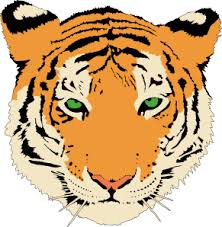

http://www.youtube.com/watch?v=v9GoVEGGb8U Counting tiger!!!
http://www.youtube.com/watch?v=lL5SAm90HK8 Tiger teaching colors!
http://www.youtube.com/watch?v=kxYNseMvCoc
TIGER CAM:
http://www.palmbeachzoo.org/tiger-cam.html
 You can hear a tiger roar over a mile away!
You can hear a tiger roar over a mile away!
 A tiger can eat 100 pounds of meat a night! Compare that to 400 hamburgers! They need a lot of food because they go days between meals.
A tiger can eat 100 pounds of meat a night! Compare that to 400 hamburgers! They need a lot of food because they go days between meals.
 Tigers have been called man eaters, yet they eat frogs, monkeys, porcupines fowl, and tortoises, especially when a good deer is hard to find.
Tigers have been called man eaters, yet they eat frogs, monkeys, porcupines fowl, and tortoises, especially when a good deer is hard to find.
 Tigers have eyes that are the brightest of any other animal in the world. At dusk, or in the beam of a torch, they blaze back the ambient light with awe-inspiring intensity.
Tigers have eyes that are the brightest of any other animal in the world. At dusk, or in the beam of a torch, they blaze back the ambient light with awe-inspiring intensity.
 Tigers are the biggest cats in the world. They live in steamy hot jungles as well as icy cold forests.
Tigers are the biggest cats in the world. They live in steamy hot jungles as well as icy cold forests.
 Depending on the subspecies, the head-body length of a tiger is about 41/2 to 9 feet (1.4-2.8 m). The length of the tail is 3 to 4 feet (90-120 cm). The foot pads vary in size with age, resulting in inaccurate estimates when used in censuring wild populations.
Depending on the subspecies, the head-body length of a tiger is about 41/2 to 9 feet (1.4-2.8 m). The length of the tail is 3 to 4 feet (90-120 cm). The foot pads vary in size with age, resulting in inaccurate estimates when used in censuring wild populations.
 Siberian tigers are the heaviest subspecies at 500 or more pounds (225 kg), with males heavier than females.
Siberian tigers are the heaviest subspecies at 500 or more pounds (225 kg), with males heavier than females.
 Although tigers usually live alone, tiger territories can overlap. A male tiger's territory usually overlaps those of several female tigers.
Although tigers usually live alone, tiger territories can overlap. A male tiger's territory usually overlaps those of several female tigers. Tigers mark their territories by spraying bushes and trees with a special mixture of urine and scent gland secretions. They also leave scratch marks on trees.
Tigers mark their territories by spraying bushes and trees with a special mixture of urine and scent gland secretions. They also leave scratch marks on trees.
 Tigers can see in the dark six times better than humans can. They can also see in color.
Tigers can see in the dark six times better than humans can. They can also see in color.
 The heaviest tiger recorded in the Guinness Book of World Records is a 1,025-pound male Siberian tiger.
The heaviest tiger recorded in the Guinness Book of World Records is a 1,025-pound male Siberian tiger.
 Young tigers live with their mother until they are two to three years old, then they find their own territories.
Young tigers live with their mother until they are two to three years old, then they find their own territories.
 Unlike some big cats like lions, adult tigers like to live alone (except for mother tigers with cubs). This is partly because in the forest, a single tiger can sneak up and surprise its prey better than a group of tigers can.
Unlike some big cats like lions, adult tigers like to live alone (except for mother tigers with cubs). This is partly because in the forest, a single tiger can sneak up and surprise its prey better than a group of tigers can.
 Most tigers have an orange coat with dark brown or black stripes accented with white. Tigers that live in cold climates (Siberian tigers) have thicker fur than tigers that live in warm climates.
Most tigers have an orange coat with dark brown or black stripes accented with white. Tigers that live in cold climates (Siberian tigers) have thicker fur than tigers that live in warm climates.
 A tiger's tail is 3 to 4 feet long, about half as long as its body. Tigers use their tails for balance when they run through fast turns. They also use their tails to communicate with other tigers.
A tiger's tail is 3 to 4 feet long, about half as long as its body. Tigers use their tails for balance when they run through fast turns. They also use their tails to communicate with other tigers.
 Tiger stripes are like human fingerprints; no two tigers have the same pattern of stripes.
Tiger stripes are like human fingerprints; no two tigers have the same pattern of stripes.
 A tiger's paw prints are called pug marks.
A tiger's paw prints are called pug marks.
 Like domestic cats, tiger claws are retractable. Tiger scratches on trees serve as territorial markers.
Like domestic cats, tiger claws are retractable. Tiger scratches on trees serve as territorial markers.
 The life span of tigers in the wild is thought to be about 10 years. Tigers in zoos live twice as long.
The life span of tigers in the wild is thought to be about 10 years. Tigers in zoos live twice as long.
 Tiger cubs are born blind and weigh only about 2 to 3 pounds (1 kg), depending on the subspecies. They live on milk for 6-8 weeks before the female begins taking them to kills to feed. Tigers have fully developed canines by 16 months of age, but they do not begin making their own kills until about 18 months of age.
Tiger cubs are born blind and weigh only about 2 to 3 pounds (1 kg), depending on the subspecies. They live on milk for 6-8 weeks before the female begins taking them to kills to feed. Tigers have fully developed canines by 16 months of age, but they do not begin making their own kills until about 18 months of age.
Tiger craft:
Color or paint a paper plate orange. Color and cut out objects below, then cut and glue. EASY - FUN!!!


ABC's - ALWAYS!!!
http://www.youtube.com/watch?v=75p-N9YKqNo
It is not too early to start writing the ABC's if your child is holding a pencil or crayon (even markers are great.) I will always print the letters in light, light blue or orange and have the children trace over them with a darker marker. Try it - just a few letters a day and remember to do capital and lowercase letters together:
Print Aa 5 - 6 times and have her trace those. If she is ready, do several letters. The letters of her name are good to start with. (The little a is just a circle with a short line - not the way shown here in type.)
We have talked about several zoo animals and they are so fun to watch on the live video cam - remember San Diego zoo is 3 hrs. behind most of us. Atlanta zoo has several other animal cams. Check those out.
Let's talk TIGERS!
http://www.youtube.com/watch?v=v9GoVEGGb8U Counting tiger!!!
http://www.youtube.com/watch?v=lL5SAm90HK8 Tiger teaching colors!
http://www.youtube.com/watch?v=kxYNseMvCoc
TIGER CAM:
http://www.palmbeachzoo.org/tiger-cam.html
Tiger craft:
Color or paint a paper plate orange. Color and cut out objects below, then cut and glue. EASY - FUN!!!
Wednesday, July 11, 2012
Hump day!!!! Wednesday surely got here fast this week! I hope you showed your child the live web cams and went back to see the others. We do this in Kindergarten and we can open it on the SmartBoard so that the cam is HUGE!! We find great lessons to write about with these cams.


Guess what animal today???? Right - the Panda !!
First, look at the panda cam at the Atlanta zoo:
http://www.zooatlanta.org/1212/panda_cam/
AND the San Diego zoo:
http://www.sandiegozoo.org/pandacam/
Pandas are my favorite!!!! Here are some interesting facts about them:
1. The panda’s diet is 99% Bamboo - It seems that the panda really knows what it likes. Bamboo has a very low nutrient content, so pandas must eat up to 84 pounds of bamboo per day. Occasionally, the panda will stray from its much loved diet of bamboo to eat grass or even small rodents.
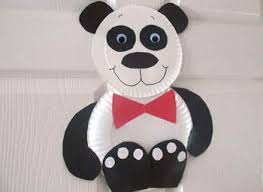
Guess what animal today???? Right - the Panda !!
First, look at the panda cam at the Atlanta zoo:
http://www.zooatlanta.org/1212/panda_cam/
AND the San Diego zoo:
http://www.sandiegozoo.org/pandacam/
Pandas are my favorite!!!! Here are some interesting facts about them:
1. The panda’s diet is 99% Bamboo - It seems that the panda really knows what it likes. Bamboo has a very low nutrient content, so pandas must eat up to 84 pounds of bamboo per day. Occasionally, the panda will stray from its much loved diet of bamboo to eat grass or even small rodents.
2.. The panda has strange skin coloring – Underneath that fuzzy coating of black and white fur, the panda has some pretty strange skin coloring. Beneath the white fur, the skin is black and beneath the black fur, the skin is pink!
3. The panda cub can’t open its eyes after birth – It takes approximately 50 to 60 days for the panda cub to open its eyes. Therefore, the mother must stay with the panda at all times, rarely leaving the den.
4. The panda has huge teeth – Even though the panda looks like an overgrown teddy bear, it can actually be quite dangerous. One panda tooth is on average seven times bigger than a human tooth.
5. The panda loves to eat – The panda’s diet may consist only of bamboo, but pandas sure spend a lot of time eating it. The panda spends between 12 to16 hours of the day eating!
6. The mother panda is 900 times bigger than the cub at birth – When born, the panda cub is about the size of a croissant. The mother will hold the tiny panda cub (she usually only has one per birth) in her paw, pressing it against her chest to keep it warm and safe.
7. Pandas bleat like goats – Pandas don’t make a scary roaring sound like most bears. Instead they make friendly bleating and honking noises to communicate with other pandas.
8. Pandas are solitary animals – Pandas enjoy their own company. They are usually alone and only socialize with other pandas when they want to mate.
9. Pandas don’t hibernate – Unlike most other bears that live in moderate climates, the panda’s food source, bamboo, is available year-round. Additionally, because bamboo has a low nutrient content, pandas are unable to pack on enough pounds to hibernate.
10. The Panda sits while eating – The panda has good manners. Instead of standing while eating food, the panda will sit in order to use its front paws to hold the bamboo shoots.
Funny panda video!!
Panda paper plate craft - easy to make!!!
Need:
2 paper plates
2 paper plates
scissors
glue
black, white, red paper (or just color your white paper)
magic marker
(Dear Parent, I hope you are drawing the shapes and letting your preschooler cut the shapes out, he needs to practice cutting. *Fiskars are the best scissors, in my opinion, for kids, Dollar Tree - $1.)
ABC's
Counting!!
Fun!!!
Monday, July 9, 2012
Today is Tuesday!!! The closer we get to school starting, the faster the days are flying by!! Don't you think?? Did you read to your child yesterday? Did you spend some quality time? Quality time can just be talking to your child. The more LANGUAGE experiences a child has, the better they will understand language, the better readers and writers they will be!
ABC's - Are you ready?? http://www.youtube.com/watch?v=VINZKA5rbvE
http://www.youtube.com/watc?v=EOPCkVmNaBU&feature=relatedh
http://www.youtube.com/watch?v=5k521GcBOYw&feature=relmfu
Numbers - http://www.youtube.com/watch?v=wiAJO0HfNdU
http://www.youtube.com/watch?v=_jxzZMw89qY
GIRAFFES:
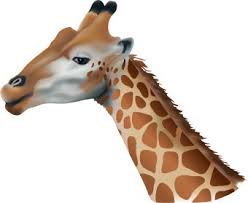
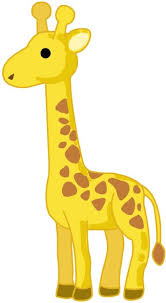
http://kids.nationalgeographic.com/kids/animals/creaturefeature/giraffe/
LIVE WEB GIRAFFE CAM:
http://www.houstonzoo.org/webcam/giraffes/platform-cam/
To do with Mom or Dad:
Paint your hand yellow, press on paper with fingers pointing down. Use brush to paint neck and face. then paint brown spots with brush. Also paint (or draw) hooves, eyes, etc.
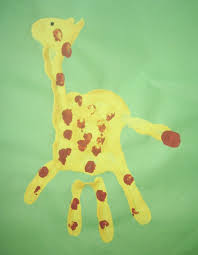
Let your child make up his OWN giraffe story or decide what he would name his giraffe. Where would your child let her giraffe sleep? What would she feed it?
HAVE FUN!!
ABC's - Are you ready?? http://www.youtube.com/watch?v=VINZKA5rbvE
http://www.youtube.com/watc?v=EOPCkVmNaBU&feature=relatedh
http://www.youtube.com/watch?v=5k521GcBOYw&feature=relmfu
Numbers - http://www.youtube.com/watch?v=wiAJO0HfNdU
http://www.youtube.com/watch?v=_jxzZMw89qY
GIRAFFES:
An adult giraffe’s heart is 2 feet long and weighs about 20 pounds.
Giraffe’s tongue is almost 2 feet long.
Male giraffes weigh 3,000-4,000 lbs. and can reach 20 feet height; female giraffes weigh 1,500-2,500 lbs. and are about 14 feet tall; baby giraffes are 6 feet tall.
Giraffes’ life span is 20-28 years.
Giraffes spread their front legs in order to reach the water on ground level to drink—their tall necks are shorter than their legs.
Giraffes use their markings to camouflage themselves among trees. Like human fingerprints, each giraffe marking is like no other one.
Giraffes’ mouth has a hard inner surface making it easy to eat thorny plants.
Giraffes cannot cough.
http://kids.nationalgeographic.com/kids/animals/creaturefeature/giraffe/
LIVE WEB GIRAFFE CAM:
http://www.houstonzoo.org/webcam/giraffes/platform-cam/
To do with Mom or Dad:
Paint your hand yellow, press on paper with fingers pointing down. Use brush to paint neck and face. then paint brown spots with brush. Also paint (or draw) hooves, eyes, etc.
Let your child make up his OWN giraffe story or decide what he would name his giraffe. Where would your child let her giraffe sleep? What would she feed it?
HAVE FUN!!
Sunday, July 8, 2012
It's Monday again! I actually LIKE Mondays right now.....
I really hope you got to watch the elephants and that they cooperated and walked in front of the cameras for you...
Today, after the abc's and number songs, we will talk about mOnKeYs!!
ABC's, sing the old song together and I hope you have some flash cards. Lay out about 5 - 6 random cards at a time and ask your child to hand you the letter R, then M, then A, etc. Your child will be able to pick out the card and SHOW it to you before they will be able to call the name of the letter. Always show the lowercase letter that goes with the capital letter.
 http://www.youtube.com/watch?v=7XYQd_sJVzk
http://www.youtube.com/watch?v=7XYQd_sJVzk
http://www.youtube.com/watch?v=CoN8grI_SQ8&feature=results_main&playnext=1&list=PL2BCF83329F8D7BD6
I really hope you got to watch the elephants and that they cooperated and walked in front of the cameras for you...
Today, after the abc's and number songs, we will talk about mOnKeYs!!
ABC's, sing the old song together and I hope you have some flash cards. Lay out about 5 - 6 random cards at a time and ask your child to hand you the letter R, then M, then A, etc. Your child will be able to pick out the card and SHOW it to you before they will be able to call the name of the letter. Always show the lowercase letter that goes with the capital letter.
http://www.youtube.com/watch?v=CoN8grI_SQ8&feature=results_main&playnext=1&list=PL2BCF83329F8D7BD6
MONKEYS
http://www.youtube.com/watch?v=idJYhjGyWTU Video of Howler Monkey
http://video.nationalgeographic.com/video/kids/animals-pets-kids/mammals-kids/monkey-howler-kids/ Live monkey cam at the San Diego Zoo :http://www.sandiegozoo.org/apecam/index.html |
Friday, July 6, 2012
I looked back through my posts and every day starts with "Happy" sooooo .....Happy Friday!! In a few weeks, I will celebrate Happy Friday, too!! I go back to school for a workshop July 30 th, then workshops the first three days of school, that starts August 1st for me. Boy, do I love workshops!!!! (not)
Think we should start with the ABC's and Numbers again today! :)
 and
and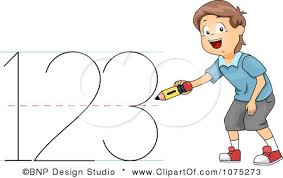
http://www.youtube.com/watch?v=XCuZBILuebI ABC SONG
http://www.youtube.com/watch?v=qLnr77uyl0c&feature=relmfu Number song
If your child is starting to color and draw - that is fantastic!! Make sure your child does NOT start at the bottom and write up.....teachers really don't like that. It is so hard to break them of that habit , impossible really. ALWAYS start at the top and write down. You can use salt or sand to practice writing in. Put either in an empty shoe box and use your finger, end of a pencil, or whatever to practice writing. When you write, teach your child to write both letters (UPPER and lowercase at the same time - to begin with.) Not in their name of course, make sure you only use the first letter capitalized in their name.) If your child has never written, start with one letter at a time in the salt first, shake, try again. Always write it on paper first so they have something to look at and go by.
Going to talk about the elephant today!! I am so in love with the elephant, so strong and HUGE.
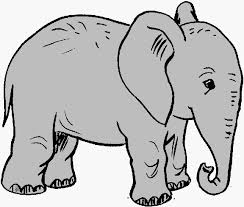

 Elephants are wonderful animals! They are the largest mammals in the world that live on land. There are two kinds of elephants; African and Asian. Asian elephants have smaller ears and shorter tusks than African elephants. The African elephant is bigger and taller than the Asian elephant.
Elephants are wonderful animals! They are the largest mammals in the world that live on land. There are two kinds of elephants; African and Asian. Asian elephants have smaller ears and shorter tusks than African elephants. The African elephant is bigger and taller than the Asian elephant.
Make a paper plate elephant:
Color a paper plate gray, then print out or draw for your child the following, help them cut and glue. The elephant ears are the tracing of your feet (with shoes.)
The elephant ears are the tracing of your feet (with shoes.)
I LOVE elephants.http://www.youtube.com/watch?v=XP-AY3Q1iHc
Did you know you can watch live elephants on video cams at different zoos around the US?
http://www.sdzsafaripark.org/video/elephant_cam.html San Diego
http://www.elephantswithoutborders.org/web_cam.php Africa
http://www.elephants.com/elecam/ Elephant Sanctuary
Sometimes you have to wait for the elephants to walk in front of the camera!!
Enjoy!
Think we should start with the ABC's and Numbers again today! :)
http://www.youtube.com/watch?v=XCuZBILuebI ABC SONG
http://www.youtube.com/watch?v=qLnr77uyl0c&feature=relmfu Number song
If your child is starting to color and draw - that is fantastic!! Make sure your child does NOT start at the bottom and write up.....teachers really don't like that. It is so hard to break them of that habit , impossible really. ALWAYS start at the top and write down. You can use salt or sand to practice writing in. Put either in an empty shoe box and use your finger, end of a pencil, or whatever to practice writing. When you write, teach your child to write both letters (UPPER and lowercase at the same time - to begin with.) Not in their name of course, make sure you only use the first letter capitalized in their name.) If your child has never written, start with one letter at a time in the salt first, shake, try again. Always write it on paper first so they have something to look at and go by.
Going to talk about the elephant today!! I am so in love with the elephant, so strong and HUGE.
Facts About Elephants!
Do elephants live together?
Elephants live in families. Several families live together in a "herd." The leader of the herd is usually the oldest female elephant. She is called the "matriarch." All the babies and other females follow her.
What do elephants eat?
Elephants are plant-eaters. Because they are such big animals, they need to eat large amounts of leaves, grass and tree bark. They spend as much as twenty hours a day eating! A full-grown African elephant can weigh more than 10,000 pounds!
Teeth and Tusks
Elephants have four teeth and two "tusks." The tusks are the long horn-like parts that come out the sides of their mouths. These tusks grow about seven inches a year, and can get up to twenty feet long! The tusks are made of ivory, which is very valuable.
The elephants four teeth are molars. About every four years, the molars fall out and are replaced by new ones. The molars of an adult elephant can be up to ten inches long!
An elephant only has 4 teeth!!!!
Ears and Trunks
The ears of a full-grown African elephant are about five to six feet long and four feet wide. They sometimes flap their ears to cool themselves.
An elephant's trunk is actually part nose and part upper lip. Elephants can breathe through their trunks. They can also smell and pick up things with it. They can use it to put food into their mouths, and can even spray water with it! The trunk is used to feel things, too!
How do elephants cool themselves?
When it is hot, elephants like to get into water and mud. They also use their trunks to spray water and dust on their bodies. Wrinkles on their skin trap the water and help with the cooling.
How do elephants talk?
Elephants talk to each other by making sounds called "tummy rumbles." They also make a "trumpeting" sound to call to each other.
How long do elephants live?
Elephants can live as long as eighty years!
**********
You can see elephants in zoos. Many zoos work hard to keep the elephants happy, by providing them with the kind of habitat they would have if they were out in the wild.
Elephants should be treasured. They are the "gentle giants" of the animal kingdom!
Color a paper plate gray, then print out or draw for your child the following, help them cut and glue.
I LOVE elephants.http://www.youtube.com/watch?v=XP-AY3Q1iHc
Did you know you can watch live elephants on video cams at different zoos around the US?
http://www.sdzsafaripark.org/video/elephant_cam.html San Diego
http://www.elephantswithoutborders.org/web_cam.php Africa
http://www.elephants.com/elecam/ Elephant Sanctuary
Sometimes you have to wait for the elephants to walk in front of the camera!!
Enjoy!
Thursday, July 5, 2012
We made it to Thursday and slept in spite of the fireworks last night. Hope you had a great Fourth!!
I slept in today - 5:00 ~ :) . We will look at horses today and then probably talk about zoo animals. Many more different animals live on farms, but we will stop here for now.
HORSES:
I slept in today - 5:00 ~ :) . We will look at horses today and then probably talk about zoo animals. Many more different animals live on farms, but we will stop here for now.
HORSES:
Top Ten Facts About Horses:
- Dogs and cats drink by lapping water with their tongues while cattle and horses make use of a sucking action.
- A baby female is called a filly, a baby boy is called a colt, a baby boy or girl is also known as a foal.
- When first born, foals cannot eat grass because their legs are too long to reach the ground.
- Foals can stand up within one hour of being born.
- Most foals are born at night.
- Thoroughbreds all have the same birthday which makes it easier to keep breeding, racing, and showing records.
- As well as using them for fly swatting, horses use their tails to send signals to each other about how they are feeling.
- A horse's height is measured in hands. 1 hand = 4 inches.
- Horses belong to the equus family which comes from the Greek word meaning "quickness".
- A pony is not a baby horse, but rather a full grown small horse.
- http://www.youtube.com/watch?v=XuFV0TcOKPc Cute rapping song about horses!!!
Positional words are hard for some children, it is never too early to start. This cute video has a catchy tune and you can practice during the days with your preschooler. Any object: put it ON your head, UNDER your foot, IN your hands!
ALSO, again your child cannot start coloring and writing too soon. Watch this video and draw a horse with your child. Then, you can draw a star ON the horse, UNDER the horse, etc. http://www.youtube.com/watch?v=vFn6lOCSopg
YouTube is a great source for learning, it can also be a very bad thing for children to try to search themselves. Make sure you are always with your child when using the computer.
Have fun today and don't forget to sing the ABC's AND the number song. http://www.youtube.com/watch?v=Zw6Fps2O7XY
Make sure you READ today! Talk to you tomorrow.
Subscribe to:
Comments (Atom)